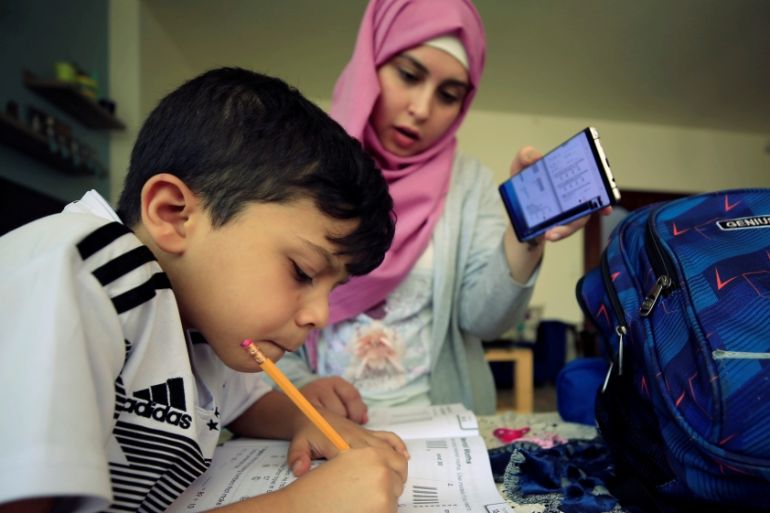UN: Nearly 500 million children excluded from remote schooling
At least one-third of world’s schoolchildren affected by the coronavirus pandemic and school closures, report says.

An estimated 463 million children have been unable to access remote learning amid the coronavirus pandemic and widespread school closures, according to the United Nations children’s fund.
A new report published on Thursday by UNICEF said at least one-third of the world’s schoolchildren lack the equipment or electronic access that would allow them to pursue distance education.
Keep reading
list of 4 itemsMexico’s teachers seek relief from pandemic-era spike in school robberies
‘A bad chapter’: Tracing the origins of Ecuador’s rise in gang violence
Why is the US economy so resilient?
“The sheer number of children whose education was completely disrupted for months on end is a global education emergency,” Henrietta Fore, executive director of UNICEF, said in a statement.
“The repercussions could be felt in economies and societies for decades to come,” she said.
The coronavirus pandemic has caused the largest disruption to education in history, with schools closed in some 160 countries in mid-July, affecting an estimated 1.5 billion students, according to the UN.
A new report published in July by international charity Save the Children said nearly 10 million children may never go back to school because of deep budget cuts and rising poverty caused by the pandemic.
In an attempt to prevent the spread of the virus, many countries switched to online learning, but aid groups say this has only widened the learning gap between children from rich and poor families.
The UNICEF report underlined gaping geographical differences in children’s access to distance education, with far fewer affected in Europe, for example, than in Africa or parts of Asia.
|
|
The report is based on data gathered from roughly 100 countries, measuring public access to the internet, television and radio.
Even children with adequate access may face other obstacles to distance education – whether the lack of a good workspace at home, pressure to do other work for the family, or a lack of technical support when computer problems arise, the UNICEF report said.
Of the students around the world unable to access virtual education, 67 million are in Eastern and Southern Africa, 54 million in western and central Africa, 80 million in the Pacific and East Asia, 37 million in the Middle East and North Africa, 147 million in South Asia, and 13 million in Latin America and the Caribbean.
No figures were given for Canada or the United States – the worst-affected country by the virus – where the issue of reopening of schools has sparked fierce political debate and concern among educators.
With the new school year soon to begin in many countries – including in-person classes in many places – UNICEF urged governments to “prioritise the safe reopening of schools when they begin easing lockdown restrictions”.
Where reopening is impossible, governments should arrange for “compensatory learning for lost instructional time”, the report said.